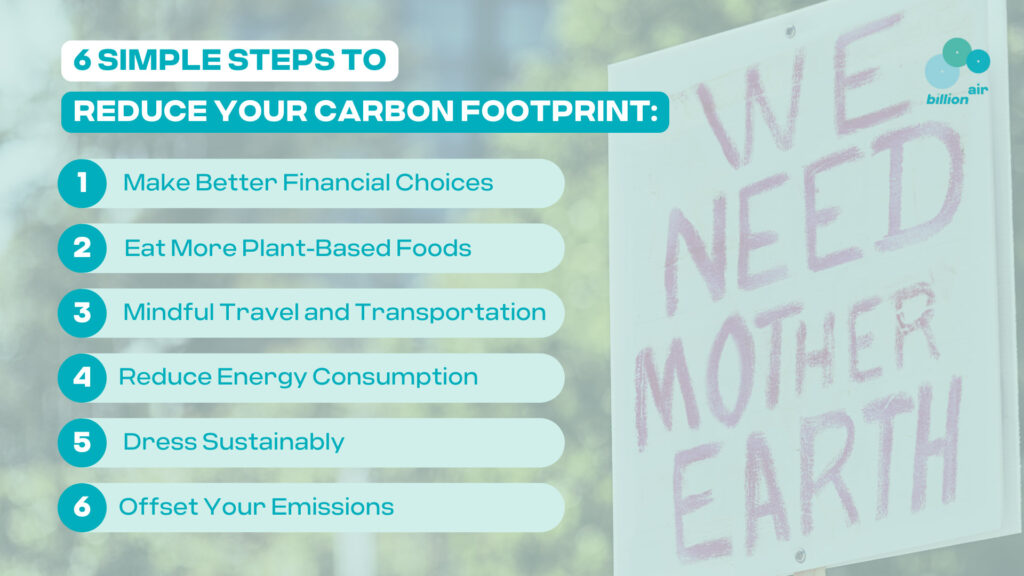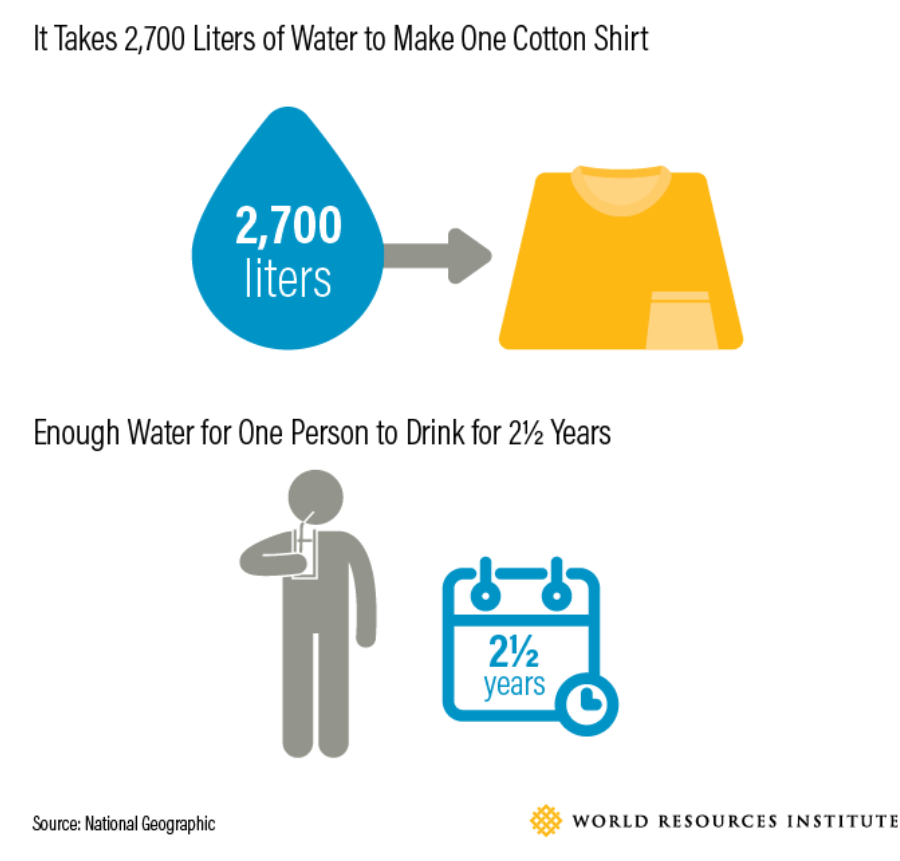Climate change is one of the biggest problems we face today, and combatting it will need a global unified effort. This phenomenon is mainly caused by increasing atmospheric greenhouse gas concentrations that mainly are emitted by human activities. Among the major emitters of greenhouse gases are energy, transport, industry, land use, buildings, and agriculture. The effects of climate change are ruthless, unpredictable, and evident, especially in developing countries with fewer means to adapt or cope with these environmental changes. The consequences of climate change include warmer temperatures, extreme weather changes, intense droughts, severe fires, rising sea levels, declining biodiversity, and water scarcity.
In facing this large opponent, every individual effort towards a greener future is valuable. By making more eco-friendly changes to our lifestyles and making wiser financial choices, we can work to reduce our own personal carbon footprint while we exert our influence to those around us to take part in addressing the climate crisis.
“Carbon footprint: the amount of greenhouse gases and specifically carbon dioxide emitted by something (such as a person’s activities or a product’s manufacture and transport) during a given period”
Merriam Webster

How Do I Measure My Carbon Footprint?
Whether at home or at work, we emit carbon emissions through our activities. Some of the common factors are our modes of transportation, electricity use, food choices, money habits, and our general waste. If you can’t make an estimate on your personal carbon footprint, then you can simply use our free lifestyle carbon calculator to measure your personal carbon footprint. The process of finding out your own carbon footprint has never been easier, just input your lifestyle habits and expect instant results.
It is essential to calculate your carbon footprint to get a more tangible idea on how much your individual activities are contributing to climate change. By taking action to lower our personal carbon emissions, we can aid in reducing overall consumer demand for the biggest greenhouse gas emitters. When we make small changes to our lives, we can send out a powerful message that we demand a change in climate action.
How Can I Reduce My Carbon Footprint?
We have a big responsibility in this world. We are part of the generation that has the opportunity to change the trajectory of our planet’s fate and secure a safer world for future generations. There are a number of ways we can help combat climate change, and one of the most immediate actions we can take is to lower our own greenhouse gas emissions by reducing our personal carbon footprint.
Here are 6 simple ways you can make a big difference:
1. Make better financial choices
Did you know that your money habits can make a huge difference in reducing your personal carbon footprint? Being more mindful of how you spend your money and making sure your pension and investment funds are being invested in corporations that conform to net-zero emissions are essential steps you need to make to ensure your hard-earned money isn’t contributing to climate change. Most people are not aware that the money in their pension and investment funds is being invested by our banks to fund private equity firms and the fossil fuel industry. In fact, 60 of the world’s biggest banks have funded over $3.8 Trillion in 5 years since the 2015 Paris Agreement.
In order to ensure that you are making environmentally-conscious investments, take the time to ask yourself this question: Do you know what businesses and which sectors the money in your pension and investments are supporting? If you don’t have the answer, then you can head to our blog article which offers helpful insights on how you can make better, more eco-friendly banking habits.
2. Eat More Plant-Based Foods
Yes, your diet does have an impact to your carbon footprint! It is no secret that meat and dairy industries are among the top emitters of global greenhouse gas emissions. In fact, researchers found that meat accounts for nearly 60% of all greenhouse gases from food production.
Raising livestock produces large amounts of methane, a type of gas that traps even more heat compared to carbon dioxide. In addition to being one of the main drivers of climate change, it is also one of the leading causes of deforestation. As the demand for animal products increases, more land is needed to be cleared to make space for livestock, contributing further to climate change as more trees are being cut down.
3. Mindful Travel and Transportation
Did you know that an average car produces approximately 4.6 metric tons of carbon dioxide per year? There is a number of greener ways of getting to where we need to be.
Stop making driving your car your first or only way to get places. If possible, you can walk, take public transportation, carpool, bike, or share a ride to your destination. Being a responsible driver also helps in reducing your personal carbon footprint: taking good care of your car and properly maintaining it increases your fuel efficiency and wastes less gas.
Environmentally-responsible travel requires proper planning. You can combine multiple errands in one trip to order to avoid unnecessary driving and use GPS apps to make sure you’re taking the shortest route.
When it comes to flying, fly only when necessary. If you must fly, then choose Economy class. Business class is responsible for almost three times as many emissions as economy, and First Class? 9x as much.
4. Reduce Energy Consumption
Review your energy consumption every few months to understand your power consumption and recognize which areas you can cut down from. Small habits such as turning off the lights, unplugging your devices when unused, and limiting your gadget use can go a long way. Remember: every action adds up! You can replace old appliances with gadgets with better efficiency, switch to LED Bulbs, and invest in improving your home’s insulation.
Have you ever heard of a Smart Home? Investing in Smart Utility Systems not only offers convenience, but also allows you to limit the use of unnecessary energy such as heating, lighting, and more. Nowadays, there is a wide range of Smart home devices that can detect your home’s inefficiencies so you can minimize your electricity, water, and gas waste.
If you want to take a step even further, you can switch to a low-carbon energy provider. Electricity and heat emitted 15 billion tons of global greenhouse gas emissions in 2016, and these numbers continue to rise as temperatures turn to extremes. Investing in renewable or clean energy such as solar power has a number of benefits: it effectively reduces your energy bills, carbon footprint, and your reliance on fossil fuels.
5. Dress Sustainably
The fashion industry contributes 8-10% of global greenhouse gas emissions, more than both the shipping and aviation industries combined. Producing clothes makes use of large amounts of water and raw materials, and the trend for fast fashion is only getting more and more popular.
To have a greater understanding of how clothing has made such a huge environmental impact: Synthetic materials (like polyester) need approximately 342 million barrels of oil every year, over 2.5% of the world’s farmland is used for cotton production, and the process of dying clothes use about 43 million tonnes of chemicals per year.

Fast fashion may come with an attractive price tag, but its consequences are anything but cheap. Reducing your carbon footprint doesn’t mean you can’t be stylish; you just have to make better clothing choices for your wardrobe! Choose natural materials such as organic cotton, linen, and hemp. You can also opt to buy recycled fabrics and second-hand clothing. After knowing how much it actually takes to make just one piece of clothing, it is important that you also take good care of your clothes, and when you feel like you’ve grown out of them, don’t just discard them—donate!
While many in the fashion industry are playing catch-up when it comes to sustainability, @HouseofBaukjen is ahead of the curve.
— UN Climate Change (@UNFCCC) May 30, 2022
Read our newest #ClimateAction blog post to find out how.
6. Offset Your Emissions
Carbon offsetting is a way to compensate for your emissions by funding an equivalent carbon dioxide saving elsewhere. Making the green shift in our lifestyles and habits goes a long way in reducing our personal carbon footprint, however, producing greenhouse gas emissions cannot be completely avoided. Carbon offset projects offer you the opportunity to compensate for your emissions by helping to pay for projects in other parts of the world that actively reduce greenhouse gas emissions. Funding carbon offset projects not only reduces your carbon footprint, but it also provides wider benefits such as biodiversity, education, jobs, food security, health, and well-being in developing countries.
Choose an Offset Project from Our Portfolio
We offer a range of carbon offset projects to international standards, including the Verified Carbon Standard (VCS), Gold Standard Voluntary Emission Reductions (VER) and Certified Emission Reductions (CER). All of these meet the Quality Assurance Standard for Carbon Offsetting following a footprint calculation on this website and BSI’s PAS 2060 specification on carbon neutrality.
Calculate your emissions, view our carbon offset projects from around the world, and start reducing your emissions!




